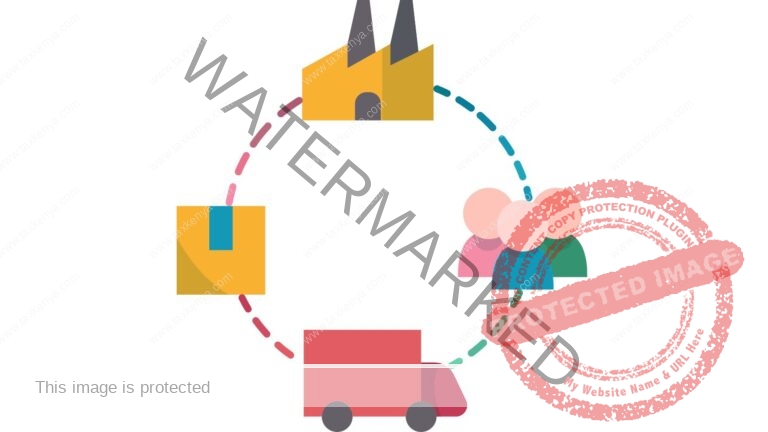There are VAT compliance requirements in Kenya. The VAT is charged on every sale along the supply chain except where there is an express exemption.
The suppliers can deduct VAT input from their VAT output. The full VAT cost is borne by the consumer at the end of the supply chain.
Registration threshold Not all suppliers should register for VAT in Kenya. However, suppliers with a taxable turnover of more than kshs 5,000,000 for twelve (12) months are required by law to register for VAT. The persons can apply to be registered or they can be compulsorily registered by the Commissioner. The law allows persons to register for VAT voluntarily, though their taxable turnover is less than the registration threshold of kshs 5,000,000. Note: This amount may be changed.
Who should register for VAT? Not all lawyers qualify to be registered for VAT in Kenya. However, as a general rule, the following lawyers qualify to be registered for VAT as long as their taxable turnover is more than kshs 5,000,000 for twelve months.
- Lawyers trading in own names.
- Lawyers trading as sole proprietors.
- Legal partnerships (normal).
- Legal limited liability partnerships.
Once registered for VAT, the person becomes a VAT registered taxpayer.
When is VAT applicable? VAT is applicable along the supply chain of service. VAT is charged where applicable on all supplies subject to the tax by the registered taxpayers. When operating a VAT system, a taxpayer is expected to account for all the VAT they are charged and all the VAT which they collect. That is the VAT on purchases and the VAT on sales. Every taxpayer needs to know the meaning of the following terms that determine VAT compliance. Non-compliance with the provisions of VAT will result in fines, penalties and interest.
Tax point VAT should be collected at specific points in the supply chain. A tax point is when tax is due and payable. However, the taxpayer can defer the payment up to the 20th of the following month. Failure to adhere to the requirements of the tax point results in penalties and interest. According to the VAT Act (2013), the tax point is determined by the earliest of the following dates:
- Date supplies are made.
- Date services are performed.
- Date of invoice.
- Date payment is received in full or in part.
- Date of certificate of completion in civil works industry.
The earliest of the above dates is the tax point – when tax is due and payable.
Tax period VAT is reported for a tax period. VAT tax period is one calendar month – from the beginning of the month to the end of the calendar month.
Tax rates Currently, legal services in Kenya are taxable at 16% which is the general or standard tax rate. Sometimes, services may be taxable at 0% where the supply is zero-rated, or the supply is an export.
VAT due for the month The VAT due for each tax period is the net VAT amount on the debit side of the VAT return, less the net amount on the credit side of the VAT return in any tax period, which is one calendar month.
Actual VAT payable The actual VAT due for each tax period is the VAT output less deductible VAT input. The deductible VAT input is the VAT input for the month plus VAT credits carried forward from previous periods less Withholding VAT paid. Deductible input VAT is input incurred in the furtherance of the legal business and input VAT is not prohibited by the VAT Act.
VAT analysis For every tax period, the taxpayer is expected to maintain a VAT summary. This is a summary of all VAT output, deductible VAT input, Withholding VAT (where applicable), VAT output in credit notes and VAT input in debit notes for the tax period. The following is the summary of the VAT analysis: VAT output kshs xxx
plus VAT input in debit notes
kshs xxx Total kshs xxx
Less Deductible VAT input kshs xxx
plus any WHT VAT kshs xxx
plus VAT output in credit notes
kshs xxx Total Net balance kshs xxx The Net Balance has four possible balances depending on the amount of VAT output, deductible VAT input, VAT credits carried forward and Withholding VAT. The following are the four possible net balances:
- Debit balance – VAT output (sales and debit notes) is more than VAT input (purchases and credit notes) plus VAT credits carried forward from previous periods plus Withholding VAT where applicable.
- Credit balance – VAT output (sales and debit notes) is less than VAT input plus VAT credits (purchases and credit notes) carried forward from previous periods plus Withholding VAT where applicable.
- Zero balance – VAT output (sales and debit notes) equals VAT input (purchases and credit notes) plus VAT credits carried forward from previous periods plus Withholding VAT where applicable.
- Nil balance – no business was transacted, hence no VAT output (sales and debit notes) and no VAT input (purchases and credit notes).
VAT due date VAT is due at the point of supply. However, remittance of the VAT due may be delayed up to the 20th day of the following month after the end of the tax period.
Monthly VAT returns The VAT monthly returns are the basis of tax assessments. The details in the VAT monthly summary are reported to the KRA through the VAT 3 monthly returns. The type of VAT 3 monthly returns will depend on the VAT summary balances. VAT monthly returns are based on the monthly balances and may either be:
- Debit balance – Debit return.
- Credit balance – Credit return.
- Zero balance – Zero return.
- Nil balance – Nil return.
The VAT3 monthly returns are due on or before the 20th day of the following month after the end of the tax period.
Debit returns The VAT output (sales and debit notes) is more than the VAT input (purchases and credit notes) plus VAT credits carried forward from previous periods plus Withholding VAT where applicable. The VAT due is remitted to the KRA. The tax payment is accompanied with a completed VAT monthly return form which is completed in
i-Tax platform. The VAT monthly return is the basis of the tax assessment and payment. A tax payment slip is generated from
i-Tax platform. The taxpayer makes the payment in one of the KRA appointed banks. The payment has to be done by the 20th day of the following month after the end of the tax period. Failure to submit a VAT debit return attracts a fine. This is in addition to penalties and interest for any outstanding tax for the month not paid.
Credit returns The VAT output (sales and debit notes) is less than the VAT input (purchases and credit notes) plus VAT credits carried forward from previous periods plus Withholding VAT where applicable. The following are submitted to the KRA using templates in i-Tax:
- VAT return forms which are summaries of business transactions for the tax period.
- VAT 3A which is the VAT input analysis.
- VAT 3B which is an analysis of goods and services that are exported or sold to persons whose supplies are zero-rated in the VAT Act or through the Kenya Gazette.
Zero returns Zero returns are returns made when the trader is in a zero-tax position. This may result because VAT input from purchases plus VAT from credit notes plus VAT credits carried forward plus Withholding VAT is more than output VAT plus VAT from debit notes.
Nil returns Nil VAT monthly returns are returns made when the trader is in a nil tax position. There was no VAT output (sales and debit notes) or VAT input (purchases and credit notes). Besides, there were no VAT credits carried forward from previous months or Withholding VAT. The nil tax position can arise because the trader did not transact any business during that month.
Non-compliance The VAT returns are due on or before the 20th day of the next month. Failure to comply with the provisions to submit the tax returns by the 20th day attracts a fine. Besides, for any unpaid VAT amounts after the 20th of the month, there will be a late payment penalty. Thereafter, the unpaid VAT amounts will attract interest at a rate imposed currently at one per cent per month. The maximum penalties and interest a taxpayer can pay is 100% of the principal amount since the introduction of the capping in 2010.
Accounting for VAT It is important to remember that every registered taxpayer is mandated to account for VAT properly. There are specific issues that the taxpayer needs to be clear about. For proper VAT accounting, the taxpayer should undertake the following four steps:
- Issuance of tax invoices.
- Keeping records.
- VAT Input deduction.
- Submission of VAT returns.
Penalties - Registration – kshs 100,000 for every month or part of the month they remain unregistered from when one was due to register up-to-the month immediately before the person submits an application or is registered by the Commissioner.
- De-registration – kshs 100,000 for every month or part of month from when one was due to de-register up-to-the month immediately before the person submits an application or is de-registered by the Commissioner. Penalty should not exceed kshs 1,000,000.
- Failure to keep records – failure to keep, retain or maintain tax records for a reporting period – 10% of tax payable or kshs 100,000 and there is no tax, penalty is kshs 100,000.
- Late submission of VAT returns – 5% of the amount payable or kshs 20,000 whichever is higher.
- Tax shortfall – deliberate acts – 75% of principal tax shortfall or 5% of tax shortfall in any other case. Amount increased in repeat offences by:
- 10% in 2nd application of section to the person.
- 25% in 3rd or subsequent applications to the person.
The amount decreased by 10% when a person voluntarily discloses the information:
- Before discovery of the tax shortfall.
- Commencement of a tax audit.
(whichever is earlier). Tax shortfall penalty is not payable if:
- The person did not know or could not reasonably be expected to know the statements were false.
- Shortfall arose due to taxpayer taking a reasonably arguable position on the application of law, e.g. in submitting a tax return – not intentional.
- Failure due to clerical or similar error – but not repeated.
6. Tax avoidance – to double the amount of tax that would have been avoided. 7. Failure to comply with electronic tax system – failure to submit a tax return electronically or pay tax electronically – kshs 100,000. 8. Failure to appear before the tax commissioner when summoned – kshs 10,000 for an individual and kshs 100,000 for a corporate entity. 9. Fraudulent claims of VAT refunds – penalty equal to 2 times the amount claimed.
Disclaimer This post is for general overview and guidance and does not in any way amount to professional advice. Hence, www.taxkenya.com, its owner or associates do not take any responsibility for results of any action taken on the basis of the information in this post or for any errors or omissions. Kenyan taxpayers must always rely on the most current information from the KRA. The tax industry in Kenya is very dynamic. Email: taxkenya@gmail.com 



